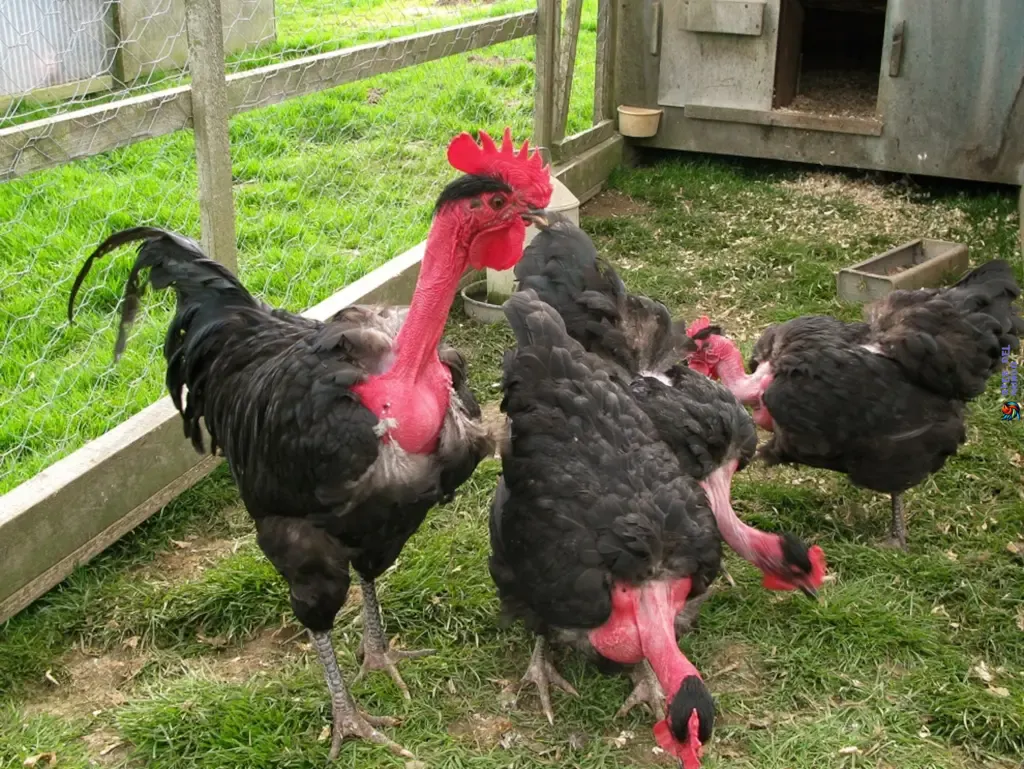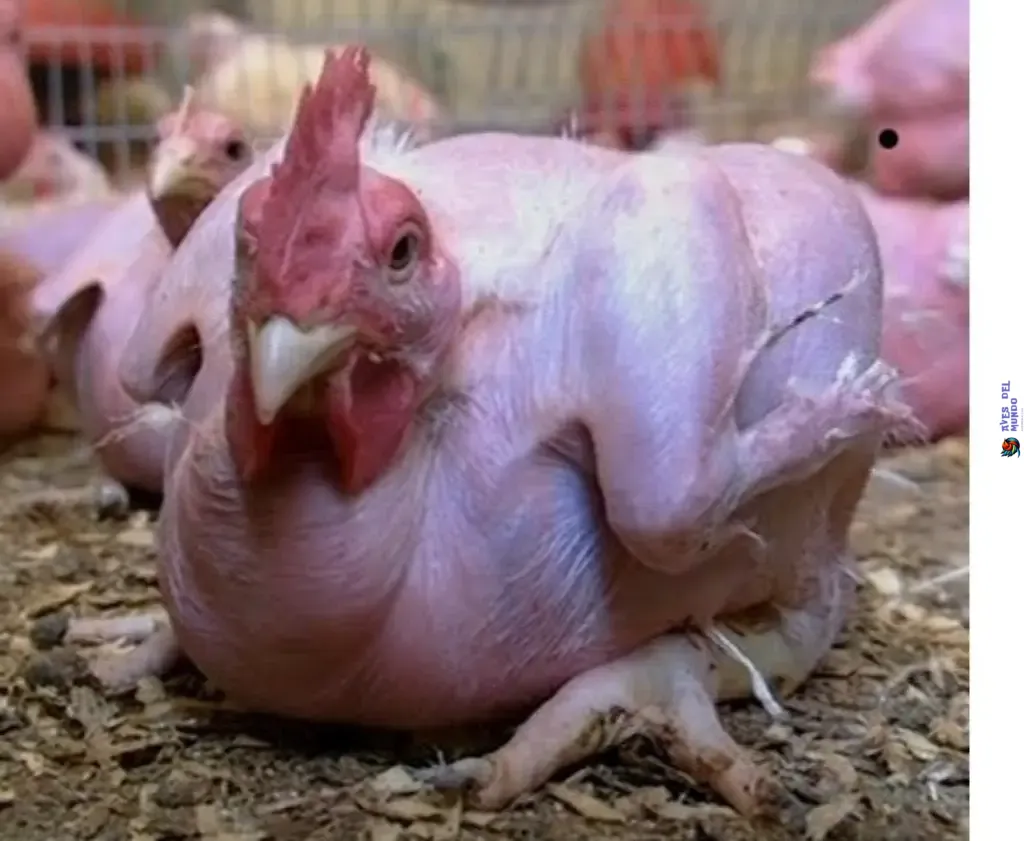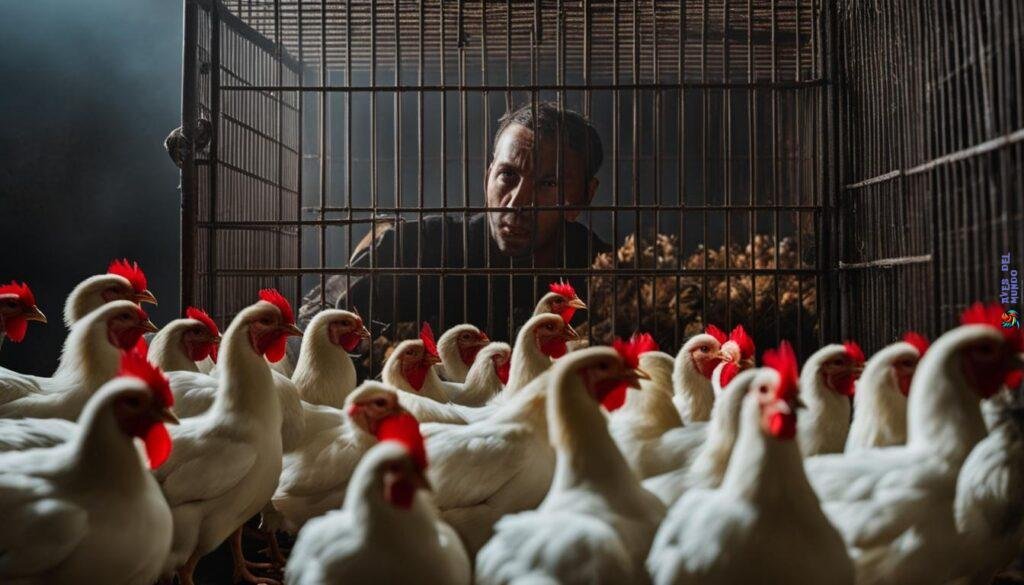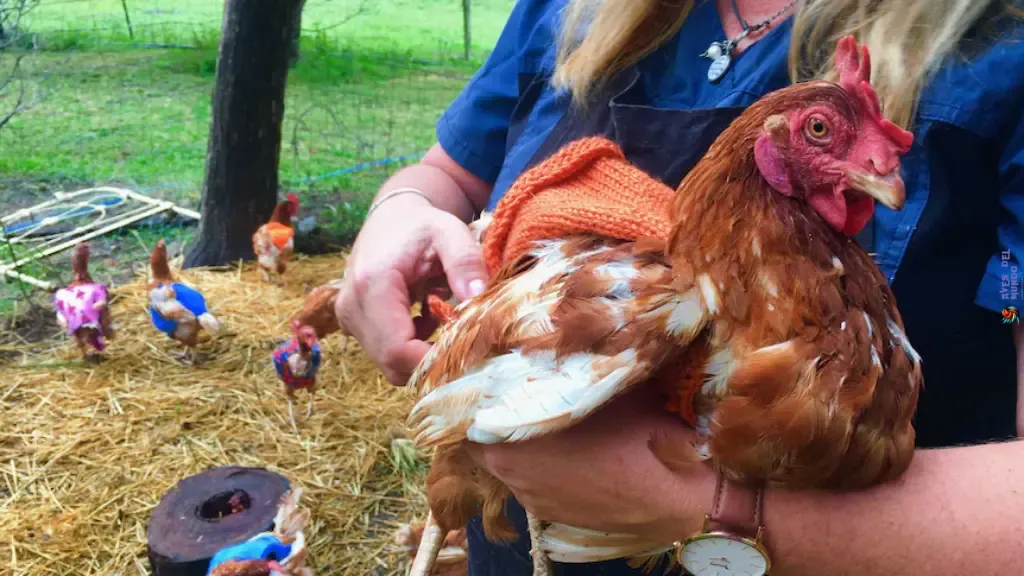Did you know that featherless chickens have been created through genetic modification?
Featherless chickens are not only a result of selective breeding but also an innovative solution to address overheating in poultry farming. These chickens are lower in calories, faster-growing, and more likely to survive in warmer climates. However, the development of featherless chickens raises concerns about the suffering of these animals and the ethical implications of genetic modification.
In this article, we will explore the creation of featherless chickens, the benefits and challenges they present, the ethical concerns surrounding them, and alternative approaches to overheating in poultry farming. We will also examine the market acceptance of featherless chickens and the relevance of these innovations in developing countries. Finally, we will discuss the future outlook for featherless chickens and the controversy they have sparked.
If you’re interested in learning more about genetic modification, sustainable aviculture practices, and the ongoing advancements in the poultry industry, keep reading!
The Creation of Featherless Chickens

Israeli geneticist Avigdor Cahaner of the Hebrew University of Jerusalem is credited with the creation of the featherless chicken. Through selectively crossing a breed with a naturally bare neck with a regular broiler chicken, Cahaner successfully developed a new breed that has distinct characteristics. This genetic modification resulted in a chicken with red skin and no feathers, commonly known as the featherless chicken or bare-skinned chicken.
The prototype featherless chicken created by Cahaner has gained attention for its potential advantages. It is believed to be lower in calories, faster-growing, and better suited to warmer climates compared to regular broiler chickens. These qualities make it a promising solution for addressing the challenges of overheating in poultry farming.
However, it is important to note that there are critics who express concerns about previous attempts to create feather-free chickens. These chickens have shown negative effects, including mating difficulties and increased susceptibility to parasites and sunburn. As such, it remains a subject of debate and ongoing research to understand the full implications and potential limitations of the featherless chicken.
Benefits and Challenges of Featherless Chickens
Featherless chickens, created through genetic modification, offer various advantages and face unique challenges in poultry farming. These chickens are specifically bred to address issues such as heat stress and environmental impact. Though they have the potential for calorie reduction and environmental friendliness, they also exhibit increased vulnerability to parasites, sunburn, and temperature variations.
Potential Benefits
Featherless chickens, according to geneticist Avigdor Cahaner, present promising benefits for the poultry industry. They offer a lower calorie production and a faster growth rate, which contribute to more efficient and cost-effective meat production. Additionally, these chickens have the potential to survive in warmer conditions without the need for extensive cooling systems, reducing energy and resource consumption. The table below summarizes the potential benefits of featherless chickens:
| Benefits of Featherless Chickens |
|---|
| Lower calorie production |
| Faster growth rate |
| Reduced environmental impact |
| Improved survival in warm climates |
Challenges and Vulnerabilities
While featherless chickens offer potential advantages, they also face some challenges due to their lack of feathers. Without feathers, these chickens are more susceptible to external factors such as parasites, mosquito attacks, skin diseases, sunburn, and temperature variations. This vulnerability requires careful husbandry practices to ensure the well-being and survival of the flock. Addressing these challenges through ongoing breeding programs is crucial to enhance the characteristics and resilience of featherless chickens.
«Featherless chickens have the potential to reduce calorie production, offer faster growth rates, and present environmental benefits. However, their susceptibility to parasites, sunburn, and temperature variations remains a challenge.»
Ongoing research and breeding programs aim to mitigate the challenges associated with featherless chickens. By improving their resistance and addressing their vulnerabilities, scientists and farmers strive to maximize the benefits these chickens can offer. By doing so, they can create a more sustainable and efficient poultry farming system.
Ethical Concerns About Featherless Chickens

Featherless chickens have faced criticism from animal rights groups and scientists who argue that the development is cruel and unnecessary. Some believe that featherless chickens experience more suffering due to their increased vulnerability to injuries and environmental factors.
Detractors point out that chickens already raised for their meat often suffer in overcrowded and inhumane conditions, and removing their feathers takes away their only protection. There are concerns about the potential health impacts and fear of hormonal usage associated with featherless chickens.
Animal Rights Groups Express Concerns
Animal rights groups, such as People for the Ethical Treatment of Animals (PETA), have been vocal in their criticism of featherless chickens. They argue that altering the genetic makeup of animals for human convenience is unethical and constitutes unnecessary cruelty. Featherless chickens are seen as victims of a system that values profit and efficiency over animal welfare. PETA and other organizations advocate for improved conditions and humane treatment of all animals raised for food, rather than creating new breeds with potential negative impacts.
«The development of featherless chickens highlights the disregard for animal welfare in modern farming practices. Genetic alteration should not be used to exploit animals for human gain.»
Suffering of Featherless Chickens
The vulnerability of featherless chickens exposes them to various forms of suffering. Without feathers, these chickens lack the natural protection from environmental factors, such as extreme temperatures, parasites, and mosquito attacks. In addition, their bare skin is more susceptible to sunburn and skin diseases. The suffering experienced by featherless chickens raises ethical concerns among those who question the necessity and consequences of genetic modification in poultry farming.
Health Implications and Hormonal Usage
Another ethical concern surrounding featherless chickens is the potential health implications associated with their genetic modification. Critics worry about the long-term effects of altering the natural genetic makeup of chickens and the introduction of artificial hormones during the breeding process. These concerns stem from the uncertainty surrounding the health and safety of consuming products derived from genetically modified animals.
| Ethical Concerns About Featherless Chickens | Description |
|---|---|
| Suffering of Featherless Chickens | Featherless chickens are more vulnerable to injuries, environmental factors, and diseases due to their lack of natural protection. |
| Criticism from Animal Rights Groups | Animal rights groups argue that the development of featherless chickens is cruel and unnecessary. |
| Health Implications and Hormonal Usage | There are concerns regarding potential health risks and the use of artificial hormones in the genetic modification process. |
Market Acceptance of Featherless Chickens

A study conducted by Agriallis Magazine suggests that consumer acceptance of featherless chickens may not be successful due to various concerns and fears surrounding their unique characteristics. These concerns include the fear of hormonal usage, apprehension towards unusual animals, and potential health impact concerns. The unusual appearance of featherless chickens has led to negative reactions from some individuals who find them disgusting or perceive them as an example of unethical science.
«Featherless chickens are bizarre. They look like they could be genetically modified in some way, which raises concerns about what hormones or chemicals might be used in their development.» – Agriallis Magazine
Consumer reluctance may stem from the fear of hormonal usage, as individuals worry about the potential health effects associated with consuming poultry that has been developed through genetic modification. Featherless chickens may be seen as an unfamiliar and unusual breed, further contributing to consumer apprehension and skepticism.
Fear of Hormonal Usage and Health Impact Concerns
- Consumers express concerns about the potential health impact of consuming featherless chickens
- Worries about the usage of hormones or chemicals during the breeding process
- Fear that these chickens may have negative effects on human health
The fear of hormonal usage and associated health impact concerns may significantly impact the market acceptance of featherless chickens. Consumers prioritize their well-being and are cautious about consuming products that may have potential risks or unknown consequences.
Apprehension Towards Unusual Animals
«Featherless chickens are just not appealing. They look strange and unnatural, like something out of a science fiction movie.» – Agriallis Magazine
- Some individuals find the appearance of featherless chickens unattractive or unusual
- Association of featherless chickens with unethical science and unnatural breeding practices
- Negative perceptions may hinder consumer acceptance in the market
The unusual and distinct appearance of featherless chickens may evoke negative reactions and dissuade consumers from embracing this new breed. The association with unethical science and unnatural breeding practices can further amplify the apprehension towards featherless chickens.

Shifting Focus towards Alternative Solutions
Given the limited market acceptance of featherless chickens and the concerns surrounding their characteristics, the poultry farming industry is redirecting its focus towards exploring other solutions to address the challenges of overheating. By investing in alternative methods and technologies, farmers aim to ensure sustainable and efficient practices without compromising consumer acceptance or animal welfare.
| Benefits of Featherless Chickens | Consumer Concerns |
|---|---|
| Lower calorie production | Fear of hormonal usage |
| Faster growth rate | Concerns about unusual animals |
| Reduced environmental impact | Potential health impact concerns |
| Survival in warmer climates |
Alternative Approaches to Overheating in Poultry Farming

In addition to the development of featherless chickens, researchers and scientists are exploring alternative methods to combat overheating in poultry farming. These approaches aim to reduce the negative impacts of overheating while maintaining the protective benefits of feathers. Two promising alternatives being investigated are genetically modified chickens and crossbreeding with heat-resistant breeds and desert fowl.
Genetically Modified Chickens
Scientists at Technion in Haifa, Israel, are at the forefront of developing genetically modified chickens that possess enhanced heat resistance. Through genetic engineering techniques, researchers are working to alter the genetic makeup of chickens to make them better equipped to handle high temperatures. The goal is to create heat-tolerant chickens that can thrive in hotter climates without compromising their overall health and productivity.
Crossbreeding with Heat-Resistant Breeds and Desert Fowl
Another approach involves crossbreeding stewing chickens with feathered breeds of desert fowl that have natural cooling mechanisms. Desert fowl, such as the Somali fowl (Gallus gallus somaliensis), have evolved to withstand the extreme heat of arid regions and possess unique adaptations that help them regulate body temperature. By crossbreeding with these heat-resistant breeds, researchers aim to develop chicken hybrids that inherit the natural cooling mechanisms of their desert counterparts, providing them with enhanced heat tolerance.
«By combining the genetic knowledge of heat-resistant breeds and the natural cooling mechanisms found in desert fowl, we have the potential to create heat-tolerant chickens that can withstand even the hottest climates.»
These alternative approaches show promise in addressing the challenges of overheating in poultry farming, offering new solutions without relying solely on featherless chickens. By exploring genetically modified chickens and crossbreeding with heat-resistant breeds and desert fowl, researchers are working towards creating poultry that can thrive in hot climates while maintaining their natural cooling mechanisms and overall well-being.
Next, we will examine the ethical concerns surrounding featherless chickens and the impact of these developments on animal welfare.

Relevance to Developing Countries
Featherless chickens and other heat-resistant poultry breeds are highly relevant to developing countries that face resource constraints in poultry farming, particularly in hot climates. These countries often struggle with limited access to expensive cooling systems, putting their poultry farms at risk during heatwaves. The death rate of chickens due to overheating or malfunctioning temperature controls is a significant concern, leading to substantial losses for farmers.

By introducing heat-resistant chicken breeds like featherless chickens, a cost-effective solution can be provided for these resource-constrained farmers. The reduced death rate resulting from improved resistance to high temperatures can have a significant impact on the overall profitability and sustainability of poultry farming in developing countries.
| Benefits to Developing Countries | Challenges in Developing Countries |
|---|---|
|
|
By harnessing the benefits of heat-resistant chicken breeds, such as featherless chickens, developing countries can potentially overcome resource constraints and improve the overall productivity of their poultry industry. The reduction in the death rate of chickens during heatwaves can significantly minimize losses and ensure a more sustainable and reliable source of income for farmers.

Quote:
«The introduction of heat-resistant poultry breeds like featherless chickens can be a game-changer for farmers in developing countries, offering a cost-effective solution to mitigate the impacts of resource constraints and reducing the death rate of chickens during heatwaves.» – Dr. Maria Fernandez, Poultry Science Researcher
The Future of Featherless Chickens
The development and improvement of featherless chickens are currently being carried out through ongoing breeding programs. Researchers are focused on enhancing the meat quality and growth rate of featherless chickens to make them more comparable to commercial stewing chickens. By improving these key characteristics, featherless chickens have the potential to become a viable option for the poultry industry.
One of the driving factors behind the ongoing breeding programs is the desire to improve the meat quality of featherless chickens. The goal is to make the meat texture and flavor more similar to traditional chickens, ensuring consumer satisfaction. By achieving this, featherless chickens have the potential to become a preferred choice for consumers looking for alternative poultry options.
In addition to meat quality, another area of focus for researchers is the growth rate of featherless chickens. The aim is to breed faster-growing chickens that can reach market weight in a shorter period of time. This not only improves the efficiency of poultry production but also makes featherless chickens more economically viable for farmers.
Furthermore, the development of featherless chickens also presents potential environmental benefits. These chickens require less feed, water, and electricity compared to traditional breeds, which results in reduced resource consumption. This can contribute to more sustainable aviculture practices and minimize the environmental impact of poultry farming.
In summary, ongoing breeding programs aim to improve the meat quality and growth rate of featherless chickens, making them more comparable to traditional poultry options. These advancements have the potential to offer environmental benefits by reducing resource consumption. As researchers continue their efforts, featherless chickens could become a valuable asset in the production of affordable and sustainable poultry meat.
Featherless Chicken Breeding Program Targets:
| Objective | Status |
|---|---|
| Enhance meat quality | Ongoing |
| Improve growth rate | Ongoing |
| Reduce resource consumption | In progress |
The Controversy and Public Perception of Featherless Chickens
The creation of featherless chickens through genetic modification has become a topic of heated debate, sparking controversy and dividing public opinion. Concerns about animal welfare and the ethics of altering the natural characteristics of animals are at the forefront of this ongoing discussion.
Opponents of genetic modification argue that poultry farming practices should focus on improving the conditions for existing chicken breeds rather than creating new breeds altogether. They believe that altering the genetic makeup of animals raises serious ethical questions and may have unintended consequences for the well-being of the animals involved.
Public perception of featherless chickens has been mixed, with some individuals finding them disgusting or an example of unethical science. This negative perception highlights the need for a careful balance between innovation and animal welfare in the field of agriculture.
«Genetic modification of animals, including featherless chickens, raises concerns about the welfare of these animals and the potential risks associated with altering their genetic makeup.» – Animal rights activist Jane Davis
The controversy surrounding genetic modification extends beyond the realm of animal welfare. There are also broader societal concerns about the long-term implications of this technology, including the impact on biodiversity, the environment, and human health.
The debate over featherless chickens serves as a reminder that as we continue to make advancements in science and technology, it is essential to consider the ethical implications and potential consequences of our actions. Finding a balance that prioritizes both innovation and animal welfare will be crucial in shaping the future of agriculture.
| Concerns | Public Perception |
|---|---|
| Animal welfare | Mixed reactions, ranging from acceptance to disgust |
| Genetic modification ethics | Viewed as unethical by some |
| Long-term implications | Concerns about biodiversity, environment, and human health |
Despite the controversy, the ongoing dialogue surrounding featherless chickens highlights the importance of considering the ethical, societal, and environmental implications of genetic modification. By engaging in open and informed discussions, we can work towards finding solutions that align with both scientific progress and the well-being of animals.

Conclusion and Future Outlook
Innovation in poultry farming is essential for addressing the challenges of overheating and ensuring sustainable practices. Featherless chickens have emerged as an innovative solution, offering potential benefits such as improved survival in warmer climates and reduced resource consumption. However, the development of these chickens has been met with criticism and limited market acceptance.
Moving forward, future research aims to strike a balance between genetic modification and animal welfare considerations. The focus will be on improving existing chicken breeds to enhance their heat resistance and exploring sustainable practices for poultry farming. By prioritizing animal well-being and ethical considerations, the industry can evolve in a responsible and sustainable manner.
The ongoing advancements in poultry genetic research and breeding programs hold great promise for the future of aviculture. These efforts seek to improve the meat quality and growth rate of featherless chickens, bringing them closer to commercial stewing chickens. Additionally, the potential environmental benefits, such as reduced resource usage, make the development of heat-resistant chicken breeds crucial for a more sustainable and efficient poultry industry.
As the industry continues to evolve, it is important to consider animal welfare as a primary concern. By combining scientific innovation with ethical practices, poultry farming can achieve a balance between sustainability, animal well-being, and meeting the demands of a growing population. The future of aviculture lies in the pursuit of ingenuity, sustainable practices, and a deep commitment to animal welfare.



